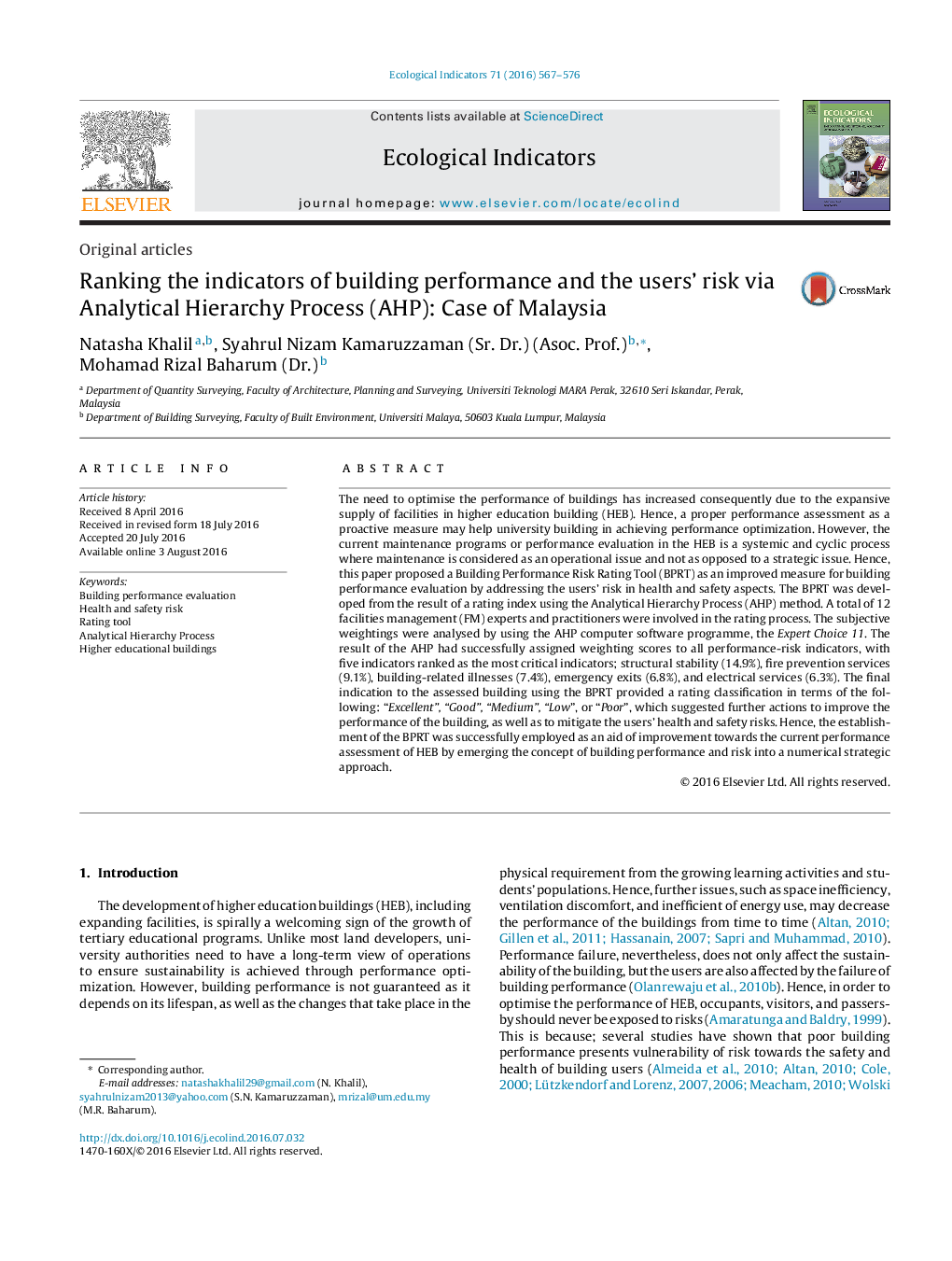| Article ID | Journal | Published Year | Pages | File Type |
|---|---|---|---|---|
| 6293011 | Ecological Indicators | 2016 | 10 Pages |
Abstract
The need to optimise the performance of buildings has increased consequently due to the expansive supply of facilities in higher education building (HEB). Hence, a proper performance assessment as a proactive measure may help university building in achieving performance optimization. However, the current maintenance programs or performance evaluation in the HEB is a systemic and cyclic process where maintenance is considered as an operational issue and not as opposed to a strategic issue. Hence, this paper proposed a Building Performance Risk Rating Tool (BPRT) as an improved measure for building performance evaluation by addressing the users' risk in health and safety aspects. The BPRT was developed from the result of a rating index using the Analytical Hierarchy Process (AHP) method. A total of 12 facilities management (FM) experts and practitioners were involved in the rating process. The subjective weightings were analysed by using the AHP computer software programme, the Expert Choice 11. The result of the AHP had successfully assigned weighting scores to all performance-risk indicators, with five indicators ranked as the most critical indicators; structural stability (14.9%), fire prevention services (9.1%), building-related illnesses (7.4%), emergency exits (6.8%), and electrical services (6.3%). The final indication to the assessed building using the BPRT provided a rating classification in terms of the following: “Excellent”, “Good”, “Medium”, “Low”, or “Poor”, which suggested further actions to improve the performance of the building, as well as to mitigate the users' health and safety risks. Hence, the establishment of the BPRT was successfully employed as an aid of improvement towards the current performance assessment of HEB by emerging the concept of building performance and risk into a numerical strategic approach.
Related Topics
Life Sciences
Agricultural and Biological Sciences
Ecology, Evolution, Behavior and Systematics
Authors
Natasha Khalil, Syahrul Nizam (Asoc. Prof.), Mohamad Rizal Dr.,
